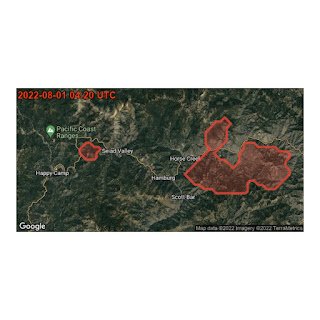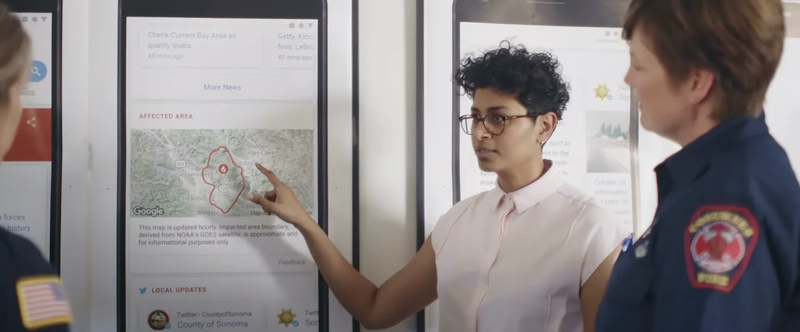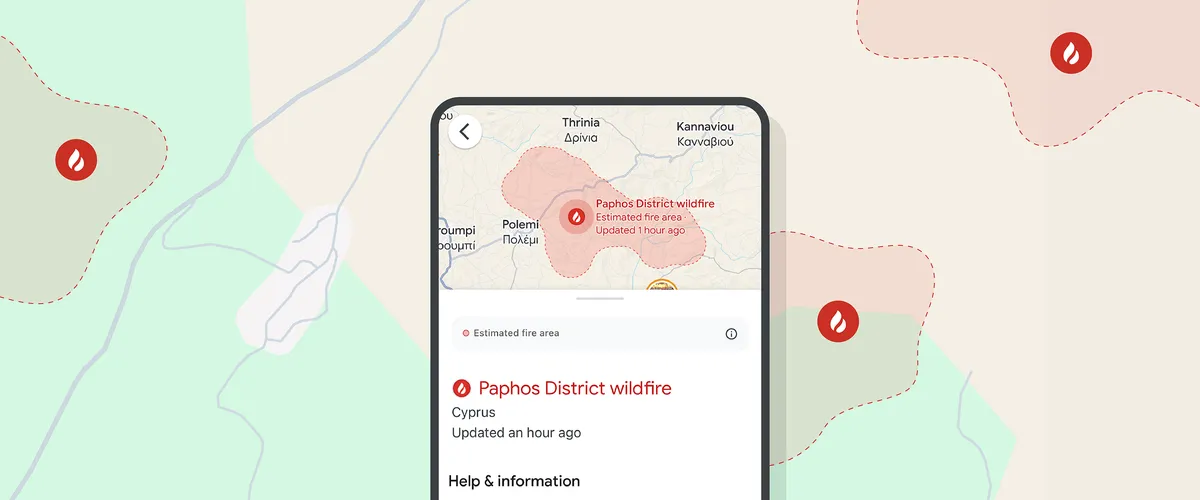Wildfire boundary tracking
During wildfires people often turn to Google to find helpful information that can keep them and their communities safe. Our team at Google Research uses AI to detect wildfires, identifying their boundaries and making this information available through Google Search and Maps, including during driving direction related searches — complementing existing on-the-ground efforts to help people access information during a crisis. In addition, the boundary tracking system sends push notifications with the wildfire information to nearby users and communities.
This wildfire boundary tracking system is available in over 27 countries.
In February 2024, a series of devastating wildfires broke out across Chile, resulting in massive damage and significant loss of life. This chain of events shows how our wildfire boundary tracker provides helpful information during a crisis.
How it works
- We gather hyperspectral satellite imagery from geostationary satellites, low earth orbit satellites, and other data sources. Satellites include GOES-18 and GOES-19 for North and South America; Himawari-9 and GK2A for Australia; and Suomi NPP and NOAA-20 satellites with VIIRS imagery in other locations.
- We take the 3 most recent images from multiple satellites and feed them into a neural network, which analyzes the visual imagery to provide fire boundary information at a 1 square kilometer resolution, updated every 10-15 minutes.
- This information is then loaded into Google Maps and Google Search.
Read the Research Blog post to learn more.












